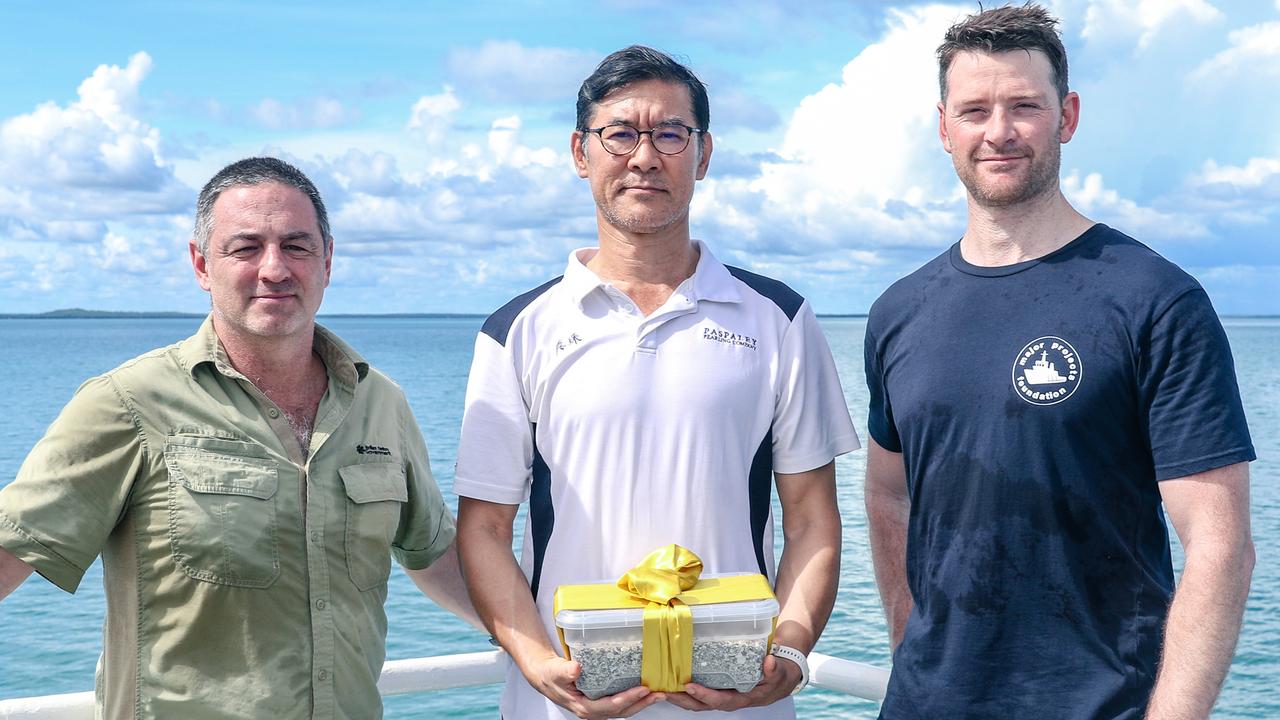Divers have surveyed a submarine that sunk during WWII killing 80 people
A heritage-listed submarine on Darwin’s sea floor has become the site of the deepest archaeological survey in history. Find out what divers saw 50m below the surface.
News
Don't miss out on the headlines from News. Followed categories will be added to My News.
An archaeological survey of a WWII wreck will offer closure to the families of fallen submariners after 80 years.
The expedition was initiated to provide new information about how to care for the Imperial Japanese Navy I-124 submarine resting 50m below the surface near Stokes Hill Wharf.
The Japanese submarine sank in 1942 with 80 crew members on board and was the first wreck in Australia to be protected under the Commonwealth Historic Shipwrecks Act 1976, which was replaced by the Underwater Cultural Heritage Act in 2018.
NT government senior heritage officer and maritime archaeologist David Steinberg said the expedition was a huge breakthrough.
“We’ve collected very significant baseline data so that we can start to ask ourselves both research questions, and share that knowledge with the Japanese,” he said.
“The level of accuracy and detail that’s been captured is just remarkable with these new technologies and new advances in maritime shipwreck mapping.
“It’s got us so much new information, it’s basically a game-changer in how we understand our shipwreck resource.”
Dr Steinberg said the survey had not previously been attempted due to difficulties associated with the depth of the site such as poor visibility and strong tidal movements.

Australian Japanese Association of the Northern Territory secretary Takenobu Hamaguchi said he was grateful for the research done to preserve the site.
Mr Hamaguchi was presented with a container of sand from the seabed beside the wreck that would be the first relic families of the deceased submariners would receive.
He said he would be in Japan next month where he would present the sand to the families.

Major Projects Foundation research director Matthew Carter said the expedition was the deepest archaeological survey in Australian history.
“It just opens up so many possibilities across the whole country,” he said.
Dr Carter said the six divers involved in the survey used underwater scooters with high resolution cameras attached to take “thousands and thousands of photographs” that were used to create a 3D model of the wreck.
The model is accurate to within centimetres of the submarine’s design.
“Compare that to the way things used to be done with a tape measure and a pencil and a notepad underwater, this literally is light years ahead of that,” Dr Carter said.
“One of the exciting things is we can then take that data, we can take that 3D model and present it to the NT public, the Australian public.
“So few of them will ever be able to dive that shipwreck, so we can use it as a public engagement tool to say, ‘hey, this is a really important part of your heritage, this is what it looks like, and while you can’t dive it, you can have it on your desktop, you can look at it on your phone’, and then bring it to the people that way.”
The expedition was a non-intrusive analysis of the site and divers did not enter the submarine out of respect for the war grave.
More Coverage
Originally published as Divers have surveyed a submarine that sunk during WWII killing 80 people








